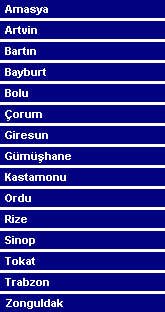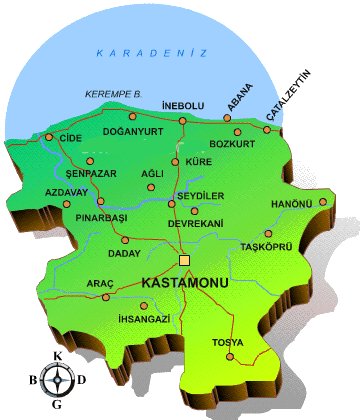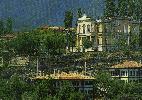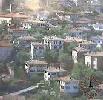| Kastamonu... |
|
Kastamonu is a lovely city hidden in the midst of forests. The beauty of the 12th century Byzantine castle at
the foot of the hill welcomes you. The 13th century Atabey Mosque and the Ibni Neccar Mosque are worth visiting.
In the village of Kasaba you will have the opportunity to see one of the most elegant wood carvings of Türkiye, on the
Mahmut Bey Mosque. The Ilgaz National Park is 63 km south of Kastamonu. It is a perfect destination for mountaineering
and especially for winter sports since there is a ski - center with good accommodation facilities. The landscape at from
the Ilgaz Mountain (2,587 m) is breathtaking; you will want to take some photographs. The Kizilirmak River contributes to
that marvelous picture of the city. The Ilgarini cave at Cide, the Alinca underground cave at Kure, and the International
Equestrian Tourism Center of Daday are the other attractions. Inebolu, 100 kms north of Kastamonu, is a typical Black Sea
town, exhibiting fine examples of traditional Turkish architecture in the midst of greenery. To the east of Inebolu is the
Abana holiday center. To the west is Cide with good hotels and sandy beaches, as well as the dreamlike Gideros Bay.
Situated inland amid beautiful forests, the provincial center of Kastamonu has preserved its important monuments : the
12th century Byzantine castle, the 13th century Atabey Mosque and the Ibni Neccar Mosque of 1356.
The Archaeological and Etnographic Museum displays artifacts found in the region. Near the town is Evkaya, a rock tomb
dating from the sixth century BC. In the village of Kasaba, the 14th century Mahmut Bey Mosque retains some of
the finest wood carvings found anywhere in Türkiye. 41 km west of Kastamonu via Daday, Cömlekciler village has traditional
timber houses, and farms offering country horseback riding-tours. 63 km south of Kastamonu, the road brings you to Ilgaz
National Park, a delightful protected area which includes the Ilgaz Mountains; a ski center possesses good accommodation.
In Tosya, east of the park by the Devrez and Kizilirmak rivers, extensive rice fields cover the landscape. Safranbolu
originally takes its name from the saffron fields that dotted the area in the 19th century. Today, saffron
fields abound in the village of Davutobasi, 20 km away, where a thriving saffron business continues. Before leaving, be
sure not to miss the Arasta (Old Bazaar) where you can watch craftsmen at work and bargain with them for their goods.
|
|

|


 366...
366...
 37...
37...
 376,725...
376,725...
 13,108...
13,108...
 33 E 47 - 41 N 22...
33 E 47 - 41 N 22...





